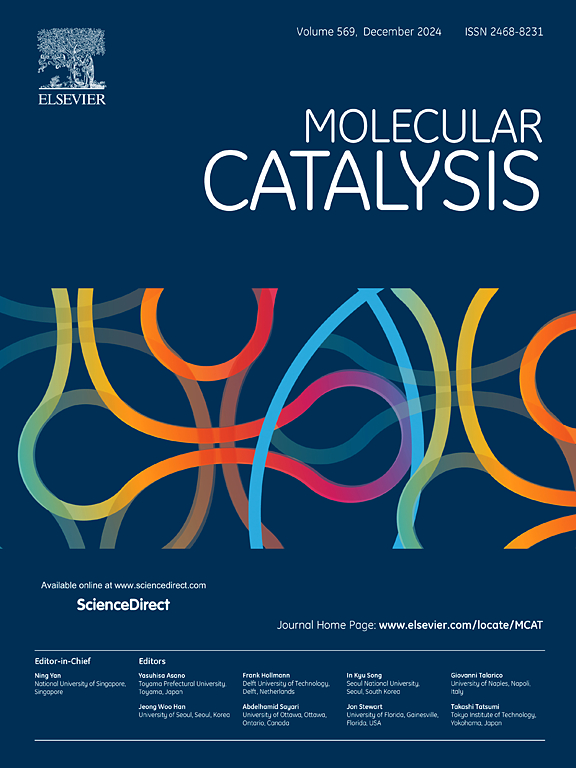有序介孔碳固有缺陷驱动下甲醇电催化氧化性能的增强
IF 4.9
2区 化学
Q2 CHEMISTRY, PHYSICAL
引用次数: 0
摘要
本研究采用有序介孔结构(OMC)碳材料作为金属钯(Pd)的载体。以电催化甲醇氧化反应为探针反应,对石墨烯(G)、碳纳米管(CNT)、炭黑(XC-72)、活性炭(AC)等传统碳材料负载的Pd/C催化剂进行了比较。理论计算预测了缺陷碳载体对甲醇电催化氧化的促进作用。Pd/OMC催化剂的电催化甲醇氧化性能显著增强,其甲醇氧化反应(MOR)活性比G、CNT、XC-72和AC负载的Pd纳米颗粒(NPs)催化剂分别提高1.9倍、1.7倍、1.5倍和1.4倍。拉曼光谱结合x射线光电子能谱(XPS)结果表明,Pd/OMC优越的电催化性能是由于其更高的内在缺陷密度,增强了电子金属-载体相互作用(EMSI)。这种相互作用促进了电子从Pd NPs向载体的转移,亏电子的Pd NPs进一步提高了电催化反应的性能。本文章由计算机程序翻译,如有差异,请以英文原文为准。

Enhancement of methanol electrocatalytic oxidation performance driven by intrinsic defects in ordered mesoporous carbon
In this study, carbon materials with ordered mesoporous structures (OMC) were used as supports for metal palladium (Pd). Using the electrocatalytic methanol oxidation reaction as a probe reaction, a series of Pd/C catalysts supported on traditional carbon materials, such as graphene (G), carbon nanotubes (CNT), carbon black (XC-72), and activated carbon (AC), were compared. Theoretical calculation predicted the promotion effect of defective carbon carrier on the electrocatalytic oxidation of methanol. The electrocatalytic methanol oxidation performance of the Pd/OMC catalyst is significantly enhanced, with its methanol oxidation reaction (MOR) activity increasing by 1.9, 1.7, 1.5, and 1.4 times compared to Pd nanoparticles (NPs) catalysts supported on G, CNT, XC-72, and AC, respectively. Raman spectroscopy combined with X-ray photoelectron spectroscopy (XPS) results revealed that the superior electrocatalytic performance of Pd/OMC was attributed to its higher intrinsic defect density, which enhanced the electronic metal-support interaction (EMSI). This interaction facilitated electron transfer from Pd NPs to the support, and the electron-deficient Pd NPs further boosted the electrocatalytic reaction performance.
求助全文
通过发布文献求助,成功后即可免费获取论文全文。
去求助
来源期刊

Molecular Catalysis
Chemical Engineering-Process Chemistry and Technology
CiteScore
6.90
自引率
10.90%
发文量
700
审稿时长
40 days
期刊介绍:
Molecular Catalysis publishes full papers that are original, rigorous, and scholarly contributions examining the molecular and atomic aspects of catalytic activation and reaction mechanisms. The fields covered are:
Heterogeneous catalysis including immobilized molecular catalysts
Homogeneous catalysis including organocatalysis, organometallic catalysis and biocatalysis
Photo- and electrochemistry
Theoretical aspects of catalysis analyzed by computational methods
 求助内容:
求助内容: 应助结果提醒方式:
应助结果提醒方式:


